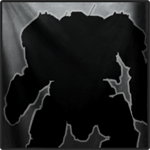 StUffz, on 08 December 2012 - 12:17 PM, said:
StUffz, on 08 December 2012 - 12:17 PM, said:
Sorry, but read again the definition of Guardian) ECM:
...
ECM works as intended.
"Within it's effect radius, an ECM suite has the following effects on the following systems. The ECM suite does not affect other scanning and targeting devices, such as TAG and targeting computers." Total Warfare, page 134.
It goes on to mention specific effects on Active Probes (like Beagle), Artemis IV, Narc Missile Beacons, and C3. It does not mention target locks or reduced scanning range.
In Tactical Operations, there are a number of optional rules for ECM. These include the optional rule for ECCM, the ghost targets setting, and the use of ECM in the case of double-blind games. From the double-blind rules:
"As a general rule, ECM/stealth systems mask a unit's nature and precise location from enemy sensors, but the systems' powerful jamming devices make it clear to the enemy that something is out there." Tactical Operations, page 223
"To be affected, the spotting unit must be in the normal operating radius of the ECM/stealth system (note that stealth systems only affect the target unit and do not have a radius of effect, and so are only taken into consideration for the unit mounting that equipment)." Tactical Operations, page 223
An interesting note in these rules is that "all units have a 360-degree visual arc; 'Mechs have a 360-degree view compressed into the forward view screen." <<< Naturally this is not part of MWO, and that is probably for the best.
In the tabletop, ECM does not affect visual targeting at all. It can make targeting a unit outside your LOS more difficult, so long as the spotter is in the ECM field (so it might mask your heat signature if someone was using heat vision, but it wouldn't affect your ability to get a visual lock and wouldn't affect heat vision at long distances). This is what they mean by "mask a unit's nature and precise location from enemy sensors", a clause that only refers to detecting units that are not in your line of sight.
Note that stealth systems, unlike ECM, *do* have an effect even when the stealthy mech is in your visual range. These often involve polarizing light in such a way as to actually make a Stealth-equipped mech more difficult to see, even with the Mk1 eyeball.
Understand that a targeting system doesn't need to use IR or radio signatures to identify a target. Visual recognition software is well past good enough to recognize a mech silhouette. A computer could simply track the visual input the pilot is getting and to a better job at threat recognition than the pilot.
http://www.forbes.co...al-recognition/ <<< If computers can do this now, with nothing more than a conventional civilian visual spectrum camera, they can do one hell of a lot better telling a giant robot from the building beside it.
ECM works as PGI intended it, not as Battletech intended it.
---
What ECM *can* do is be set to throw out "ghost targets" as an optional rule from Tactical Operations. This might be a more sane alternative to the mechanics PGI has in operation now.
"An ECM suite can be tuned to generate "ghost targets" that may affect the ability of enemy units to properly target friendly units." <<< In tabletop terms this adds additional modifiers to hit a target so long as the enemy pilots aren't aware enough to ignore the false positives (a die roll).
If an ECM can produce false target blips and heat signatures nearby, then enemy units could very easily lose shots or waste flights of LRMs on targets that aren't there, particularly if they rely on indirect fire or heat vision scanners.
This would call for balancing streak boats some other way, but it would do a great deal to handle people who are practically sleepwalking through their use of LRMs.



































